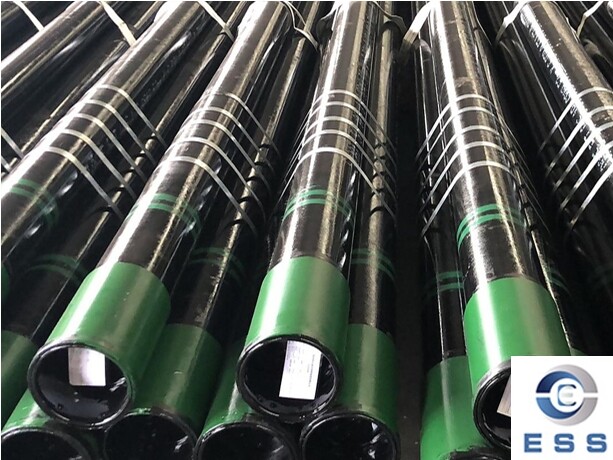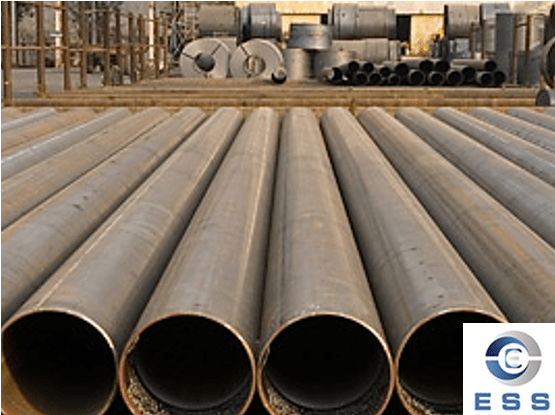
Length specifications
1. Short-length pup
joints (such as less than 1 meter)
a. Pay attention to the stability of the
connection
Due to its short length, when connecting to
equipment such as drill strings, special attention should be paid to the
tightness and stability of the connection. For example, in oil drilling, it
should be ensured that the threads at both ends of the pup joint are fully
matched with the threads of adjacent components and the tightening torque meets
the standard to prevent loosening during drilling. It is generally required
that the tightening torque error be controlled within ±10%
to ensure the reliability of the connection.
b. Prevent local stress concentration
Short-length pup joints may cause local
stress concentration in the drill string. When using, its position should be
considered to avoid placing it in the part where the drill string is bent or
subjected to greater force. When designing the drill string assembly,
mechanical analysis software should be used for simulation and calculation to
ensure that the stress distribution at the location of the pup joint is uniform
and avoid local stress exceeding the yield limit of the material.
2. Long-length stubs (such as those
longer than 3 meters)
a. Consider their own weight and deflection
Long-length stubs have a large weight and
may generate a large tensile force when installed vertically. At the same time,
they are prone to deflection when placed horizontally or tilted. For example,
in the drilling of inclined wells on offshore drilling platforms, long-length
stubs may bend due to their own gravity, affecting the straightness of the
drill string. Accurate mechanical calculations are required when using them,
and support devices are added when necessary to reduce deflection.
b. Transportation and handling safety
Long-length stubs are more susceptible to
damage during transportation and handling. During transportation, use
appropriate brackets and fixtures to ensure that the stubs will not be deformed
due to vibration or collision. During transportation, use equipment such as
cranes for smooth lifting to avoid bending of the stubs or surface scratches
due to improper operation.
Diameter Specifications
1. Small diameter pup joints (e.g. less
than 100mm)
a. Flow and pressure limitations
In applications involving fluid
transmission (e.g. drilling fluid), the internal passages of small diameter pup
joints are relatively narrow, which will limit the flow of the fluid and may
cause a large pressure drop. When using, the number and position of small
diameter pup joints should be reasonably arranged according to the flow and
pressure requirements of the system. For example, in drilling operations where
the flow of drilling fluid is carefully controlled, it is necessary to
determine whether the small diameter pup joints will affect the overall flow
through precise calculations, and adjust the pump power or replace the pup
joints with appropriate diameters if necessary.
b. Compatibility with other components
When connecting small diameter pup joints
with other components (e.g. valves, joints),
pay attention to the compatibility of dimensions. Ensure that the connection is
well sealed to avoid leakage. Before assembly, the connection components should
be strictly checked for size to ensure that the connection tolerance is within
the allowable range. The general connection tolerance is controlled within ±0.1 - 0.2mm.
2. Large diameter pup joints (such as
those larger than 200mm)
a. Installation space and equipment
adaptability
Large diameter pup joints require a larger
installation space, and their size should be considered in advance when laying
out the equipment. For example, in a narrow space underground, large diameter
pup joints may not be installed smoothly, and the borehole size needs to be
evaluated and adjusted. At the same time, it is necessary to ensure the
adaptability with surrounding equipment (such as drill collars and stabilizers)
to avoid mutual interference.
b. Weight and operational difficulty
Large diameter pup joints are usually
heavier, which increases the difficulty of installation, removal and operation.
During the installation process, large lifting equipment and sufficient
manpower are required to ensure safe operation. In addition, due to its heavy
weight, the strength requirements of the supporting structure are also higher,
and it is necessary to check whether the bearing capacity of the supporting
structure meets the requirements.
Wall thickness specifications
1. Thin wall pup joints (such as wall
thickness less than 10mm)
a. External pressure and wear resistance
Thin wall pup joints have relatively weak
external pressure resistance and are prone to deformation or rupture under high
pressure environments. For example, in deep drilling, if you encounter
high-pressure formations, thin-walled pup joints may not be able to withstand
external pressure. At the same time, their wear resistance is also limited. In
high-wear drilling environments, such as hard rock formations, thin walls are
easily worn through. When using, carefully select the application scenarios of
thin-walled pup joints according to the actual pressure and wear conditions, or
take additional protective measures, such as adding an outer protective sleeve.
b. Internal pressure limit
Thin-walled pup joints also have certain
limitations when they withstand internal pressure (such as conveying
high-pressure fluids). To ensure that the internal pressure does not exceed the
limit pressure that the pup joint material can withstand, pressure testing is
generally used to verify its safety. Under the design pressure, the safety
factor of thin-walled pup joints should not be less than 1.5 to ensure that no
safety accidents will occur under normal use and certain pressure fluctuations.
2. Thick-walled pup joints (such as wall
thickness greater than 20mm)
a. Weight and cost considerations
Thick-walled pup joints are heavy, which
will increase the weight and cost of the entire equipment. When choosing
thick-walled pup joints, it is necessary to weigh their strength advantages
against the weight and cost increases they bring. For example, in drilling
scenarios that do not require excessive strength, excessive use of thick-walled
pup joints will increase unnecessary transportation costs and equipment
burdens.
b. Heat transfer and thermal stress
When the temperature changes, thick-walled
pup joints may generate greater thermal stress due to their thick wall
thickness. When used in high or low temperature environments, the effects of
heat transfer and thermal stress should be considered. For example, in thermal
oil wells, thick-walled pup joints may generate thermal stress due to the large
temperature difference between the inside and outside, resulting in damage to
the pup joint. Thermal stress analysis is required, and appropriate insulation
or heat dissipation measures should be taken.
Summary
In short, when pup joints of different
specifications are used in various fields, only by fully understanding these
precautions can they play their respective strengths and ensure the smooth
progress of the project.













 Eastern Steel Manufacturing Co.,Ltd not only improve product production and sales services, but also provide additional value-added services. As long as you need, we can complete your specific needs together.
Eastern Steel Manufacturing Co.,Ltd not only improve product production and sales services, but also provide additional value-added services. As long as you need, we can complete your specific needs together.










